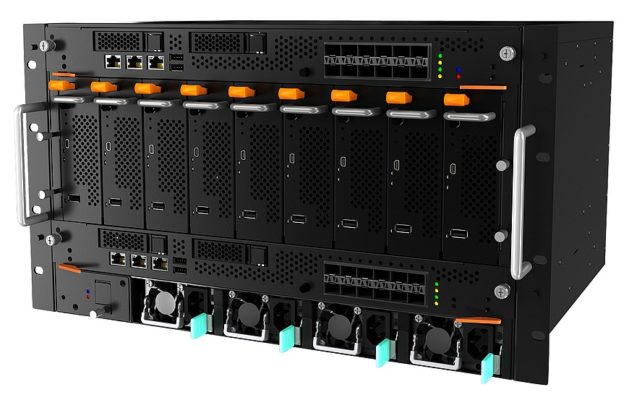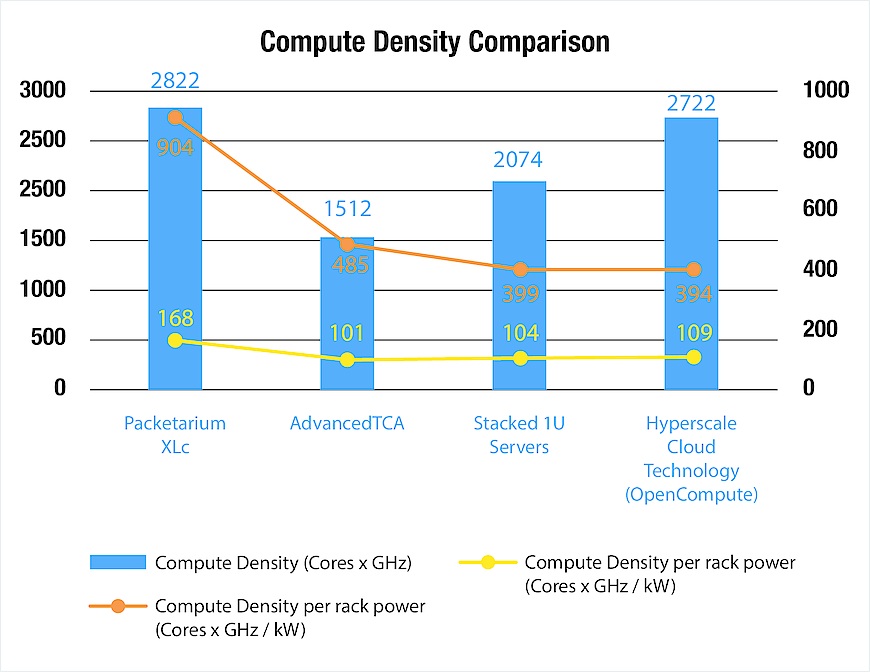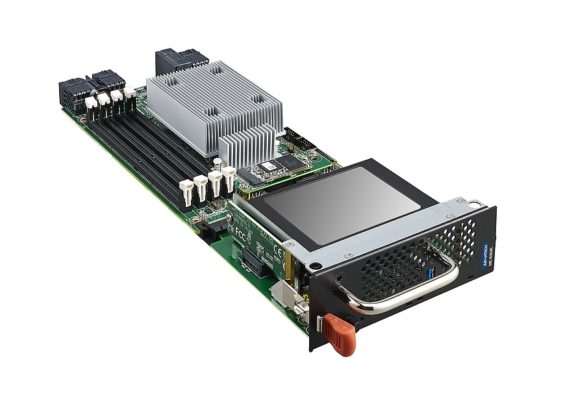Delivering Elasticity to the Mobile Edge
As data growth continues and new cell sites become harder to find, carrier providers have a golden opportunity to help operators accelerate adoption of radio access network (RAN) virtualization technology. This technology will help operators increase capacity, improve quality of experience (QoE), add new services, and prepare for 5G deployment. However, when compared to the standard white box servers and hyperscale cloud equipment used for virtualization in data centers, carrier edge equipment faces challenging physical and environmental constraints.
This article considers a new system class designed to address the requirements of mobile edge computing and cloud-RAN (C-RAN). We discuss performance requirements, industry equipment practices, and environment. We explore how to combine high-performance server processing, high-throughput switching, and carrier-grade availability with network functions virtualization (NFV) for operation with edge-aggregation-point infrastructure. We look at a new class of carrier-grade blade server that enables such a solution through its use of the Intel® Xeon® processor D-1500 product family. And we show how the resulting NFV platform simplifies the deployment of core Virtualized Network Functions (VNFs) anywhere in the network.
Meeting Carrier Requirements in RAN Virtualization
Mobile operators view C-RAN as the first step toward 5G and RAN virtualization. Operators can use it to optimize existing functions and facilitate hosting new applications at the edge. Doing more at the edge reduces the volume and peak traffic levels on backhaul links, allowing operators to upgrade radio frequency (RF) and baseband resources instead of using backhaul links to meet demand.
Though C-RAN uses open platform technology, the requirements for its edge hardware are much different than standard data center servers. In a hyperscale data center that hosts aisles of NFV infrastructure (NFVI), redundancy removes the criticality of single-system failures. The situation changes at the edge. Sites may host only a few racks or, in scenarios where carrier solutions share rack space, a less-than-fully populated NFVI rack. Any system failure negatively affects service availability and QoE. Because these sites are often remote and unstaffed, the cost and time to repair are high.
Edge hardware requirements also typically include meeting telecommunications equipment standards such as NEBS in the United States. NEBS Level 3 has strict specifications for fire suppression, thermal margin testing, vibration resistance (earthquakes), airflow patterns, acoustic limits, failover and partial operational requirements, RF emissions and tolerances, and testing/certification requirements.
To add to the complexity, in supporting NFVI’s ability to scale out rapidly, edge hardware must make optimal use of floor space. While most NFV takes place in central offices and data centers, the real opportunity is at the edge where unfortunately space, power distribution, and cooling systems are often limited.
A Carrier System for C-RAN
Recognizing the need for innovative edge solutions, Advantech, a global manufacturer of telecom computing platforms, has reinvented the carrier-grade blade server. Advantech’s Packetarium* XLc is a scale-out platform that combines AdvancedTCA (ATCA)-like infrastructure and management in a more compact, versatile, and cost-optimized design (Figure 1).

Figure 1. Advantech’s Packetarium* XLc carrier-grade blade server combines AdvancedTCA (ATCA)-like infrastructure and management in a more compact, versatile, cost-optimized design.
With a shallow depth, straight front-to-rear airflow, and a power consumption of no more than 400 W per rack unit, this highly scalable platform accommodates the highest density of compute available in a 400 mm-deep 6U carrier-grade chassis. It packs up to 288 powerful Intel® Xeon® processor cores within its walls. Designed for industry-standard 19″ racks, the Packetarium XLc deploys in data centers, central offices, and network edge sites.
Highest Compute Performance per Kilowatt and Square Foot
The Packetarium XLc series features a power rating of 2.4 kW per chassis and 16.8 kW per 42U rack. In a comparison to legacy telecom platforms – ATCA, traditional IT 1U white box server stacks, and Open Compute Project (OCP) approaches in hyperscale data centers – Packetarium XLc delivered the highest compute density per kW and per square foot of floor space (Figure 2).

Figure 2. This chart shows the results of a 2016 comparison based on Advantech calculations of the Packetarium XLc’s NFVI performance against three other solutions. The comparison was based on a full rack of equipment with a redundant 1 Gigabit Ethernet (GbE) control plane, a redundant 10 GbE data plane, and two redundant cloud control nodes.
In this 2015 comparison, Advantech tested the Packetarium XLc’s NFVI performance against other solutions based on a full rack of equipment with a redundant 1 Gigabit Ethernet (GbE) control plane, a redundant 10 GbE data plane, and two redundant cloud control nodes. As a density metric, this comparison uses the number of cores on an Intel Xeon processor D-150>0 product family SKU multiplied by the processor’s frequency. This methodology is an appropriate metric for highly virtualized workloads like NFV, and it removes dependencies on different processor SKUs supported on different platforms.
The power budget is based on the consumption of a full rack and does not include the overhead and losses incurred by facility-level power distribution and cooling because these vary. Similarly, the floor space includes only the rack itself and does not include aisle and supporting infrastructure space.
Designed for Network Functions Virtualization
A fundamental principle of telecom networks is the separation of control and data planes. The ability to control network elements and the network itself independently of the traffic load is essential to preventing excess user traffic from affecting the ability to steer the network via the control plane.
Architected from the ground up for carrier use, the Packetarium XLc includes built-in support for separate control and data planes via two independent Ethernet fabrics. To meet the availability requirements of carrier-grade NFV, both fabrics implement a dual-star topology to avoid a single point of failure. The control and data plane fabrics are connected to two redundant switch-management blades that also integrate system and chassis management functions for maximum efficiency and density at the lowest cost.
Carrier-Grade Design and Reliability
The system delivers five-nines availability and NEBS Level 3 compliance in a highly versatile, modular design. Its high availability features include:
- 2+2 redundant power supply units (PSUs) with 48VDC feeds or 220VAC feeds
- Single-fan failure survival capabilities
- Redundant system management, system fabric switches, and control modules
- Hot-swappable node blades for maximum uptime using field-replaceable units (FRUs)
The 2+2 redundant AC power scheme simplifies deployment in legacy environments that only partially supply two circuits per rack. The scheme also provides for enhanced system availability compared to N+1 topologies; the interruption of one phase will not compromise the system’s power integrity.
Single- and dual-node Intel Xeon processor blades fit in nine front slots. Generic compute blades can run application workloads (VNFs) while dedicated cloud-control nodes provide orchestration and virtual infrastructure management functions. Cloud storage nodes for content caching and media and image-processing nodes will be available in early April 2016.
A nine-slot mid-plane connects two switch-and-management modules to each of the nodes and infrastructure components within the chassis. Redundancy schemes and dedicated crossover interfaces allow for failover between switch-and-management modules. Rack-level stacking support and integration with Advantech’s Advanced Platform Management simplify overall cluster management.
Ten enhanced small form-factor pluggable (SFP+) ports provide external data plane connectivity and two SFP+ ports enable control plane connectivity. Two GbE copper ports, two USB ports, and an RS-232 console provide optional and direct access to the management subsystem. Front-attached cable trays are available as accessories and simplify rack-level cable management.
The Power Behind the Blades
The Packetarium XLc scales compute performance over nine Intel Xeon processor blades. Dual-node Intel Xeon processor blades deliver higher processing densities and lower power footprints, providing a maximum number of powerful Intel Xeon processor cores in a compact 6U platform. For media processing and content handling needs, the platform offers a flexible infrastructure for the addition of video acceleration hardware to provide unprecedented video encoding capabilities.
Advantech offers three powerful blades for the most demanding NFV workloads:
- MIC-8302C single-node compute blade featuring the Intel® Xeon® processor E5-2600 v3 product family with up to 14 cores
- MIC-8304C single-node control blade featuring the Intel® Xeon® processor D product family system-on a-chip (SoC) with 8 or 16 cores, two M.2 2242 SSDs, and two 2.5″ SATA SSDs for on-board storage (Figure 3)
- MIC-8303C dual-node compute blade with a choice of 8- or 16-core Intel Xeon processor D-1500 SoC (Figure 3)

Figure 3. Pictured are the Advantech MIC-8303C (left) and MIC-8304C (right) node blades.
The Intel Xeon processor D product family makes these last two blades particularly interesting. These processors bring the performance and advanced intelligence of Intel Xeon processors into a dense, lower power SoC, enabling the Packetarium XLc to deliver best-in-class compute density.
As Intel’s 3rd generation 64-bit SoC, the Intel Xeon processor D-1500 product family leverages industry-leading 14 nm process technology to address a broad range of low-power, high-density infrastructure needs. The SoCs include an integrated platform controller hub (PCH) technology, two integrated 10 Gigabit Intel® Ethernet ports, and a thermal design power (TDP) of 19 W to 65 W. They can run the same instruction set as more robust Intel Xeon processors to provide software consistency from the data center to the network edge.
These SoCs offer a significant step up from the Intel® Atom™ processor C2750 SoC, delivering up to 3.4 times the performance per node and up to 1.7x estimated better performance per watt. Exceptional node performance, up to 12 MB of last-level cache (LLC), and support for up to 128 GB of high-speed DDR4 memory make the Intel Xeon processor D-1500 product family ideal for a wide range of workloads and applications.
Some of their advanced server-class capabilities include:
- Enhanced reliability, availability, and serviceability (RAS) features, including support for error-correcting code (ECC) memory and platform-level error management and resilience
- Built-in hardware virtualization to enable dynamic provisioning of services as carriers extend NFV to the network edge
- Intel® Advanced Encryption Standard New Instructions (Intel® AES-NI) for accelerating data encryption and decryption without affecting QoE
- Support for Intel® QuickAssist Technology to enable offloading the handling of security protocols such as IPsec from the processor for greater efficiency
Extend NFV beyond the Network Edge for C-RAN Applications
The Packetarium XLc series breathes new life into the carrier-grade blade server market with a significantly versatile and cost-optimized design that is more compact than ATCA. The platform combines IT and high-end networking features with high-availability and NEBS-compliant design principles to enable a versatile and scalable server that can run central office VNFs anywhere in the network. Through blades based on the Intel Xeon processor D-1500 product family, the platform delivers higher processing densities and lower power footprints than previously thought possible in a compact 6U platform.